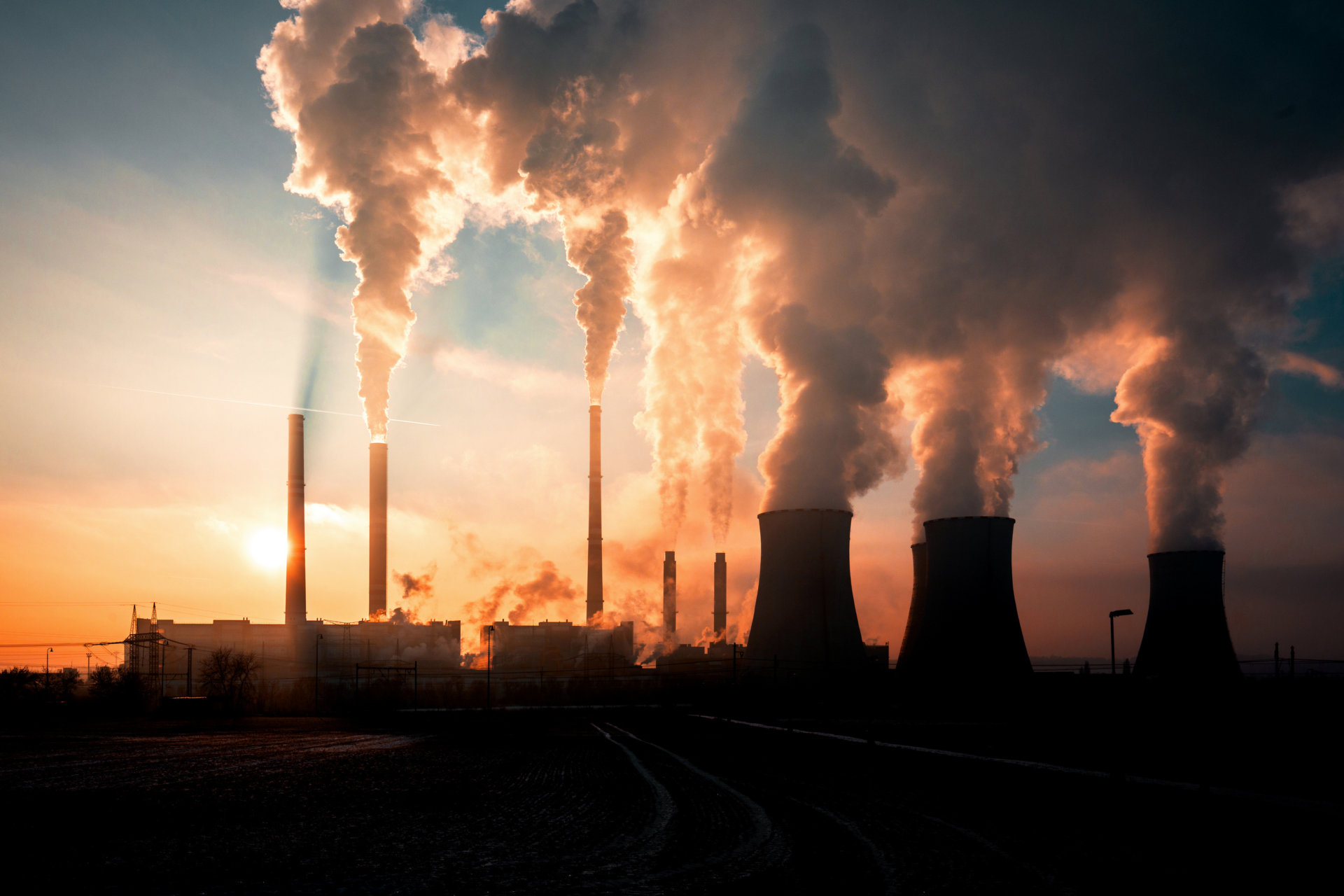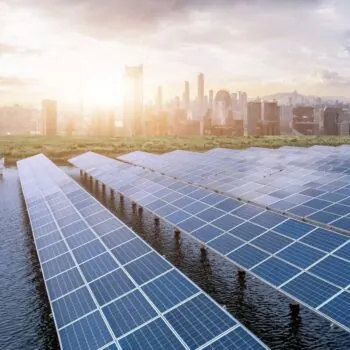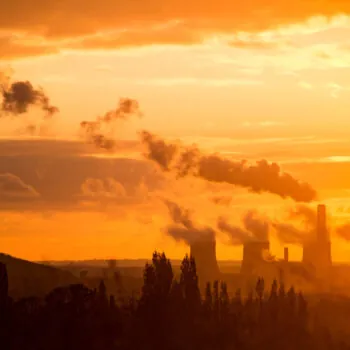On Wednesday 2 December the UN’s Environment Programme, in collaboration with leading research institutes including E3G, will launch their Production Gap Report. In anticipation, we have conducted two conversations with E3G Senior Associates Jesse Burton and Jonathan Gaventa.
In this first part, we talk to Jesse and Jonathan about recent trends in fossil fuel demand, the impacts of COVID-19, and the effects of these on major fossil fuel producing economies. You can read the second part on navigating collapsing demand and support from the international community here.
The Production Gap Report provides detailed analysis of the ‘gap’ between Paris Agreement goals and countries’ planned production of coal, oil, and gas. You can find out more on the Production Gap Report Website.
Jesse is based in South Africa, where she works closely with climate and energy modellers, governments, and non-governmental stakeholders to provide analysis and policy advice on coal transitions in South Africa and globally.
Jonathan is based in Mozambique and has been following the country’s quest for wealth by building up a gas export industry.
Interview on bridging the production gap
Leo Roberts / Lisa Fischer: Hi Jesse, hi Jonathan, First up, a broad question for you both. It seems that fossil fuel producers are increasingly finding themselves in a tricky position, as demand for their products shifts away from historical levels. What trends have you seen in recent years around overall demand for fossil fuels?
Jonathan Gaventa (JG): Well the first thing to note is that the picture varies by fossil fuel. Broadly though, the big picture before COVID-19 was that coal demand had definitively passed its peak and was falling fast, just not fast enough to align with climate goals.
Oil demand was beginning to slow meanwhile, but not nearly fast enough. Gas demand was rising quickly, on the other hand, at a pace that threatened to put global climate goals totally out of reach.
Jesse Burton (JB): I’d completely agree with Jonathan on this. Global demand growth for coal has collapsed compared to the projections from only a few years ago. In fact, coal demand looks to have peaked in 2014.
Without going into too much detail, what are some of the reasons for this collapse? Is the world using less coal, oil and gas?
JB: The major cause is that the economics of alternatives in major end use sectors are changing dramatically. In the power sector, coal used to be the largest source of energy for electricity generation – but is considerably more expensive than renewable energy in almost all countries now. For major coal users such as India, Australia and South Africa this affects the economics of new and in some cases existing coal plants – and analysis shows this is likely to accelerate.
Alongside that, air pollution and climate change are growing political issues. COVID-19 responses really impacted coal in the power sector in particular with coal demand falling around 7% in 2020 and demand for renewable energy actually growing.
In the transport sector, electric vehicles are quickly increasing their share of new sales. They are now only slightly behind the cost curve development of renewables. Once they’re competitive on capital costs with traditional vehicles you’d imagine the tide would turn very quickly, as we have seen happen with renewables in the power sector. In the meantime, policy support and regulatory targets will continue to impact demand.
You mention COVID-19 – has it upset the trends you describe, or has it hastened them?
JG: A bit of both. COVID-19 has definitely disrupted these trends. Demand for fossil fuels of all types has dropped sharply in 2020. This is particularly so for oil as transport demand cratered, and for coal, which was on shaky economic ground, to begin with as Jesse explained. Gas demand also fell by around 3%, exacerbating a glut in global gas supplies.
So has COVID-19 accelerated the path to leaving fossil fuels behind for good?
JB: Well yes and no. It might have hastened pre-existing demand declines for coal and oil, and also hit gas, as Jonathan says, but there’s definitely a question about how that will look as economies recover from the pandemic.
On the supply side, there is also a changing spatial distribution aspect. Oil and gas exploration and production seems to be shifting from traditional geographies, particularly those in the Global North, to new regions, for example.
JG: Definitely. This includes massive LNG investment in Mozambique, oil drilling in Uganda, offshore oil production in Guyana and conflict over gas resources in the Eastern Mediterranean. Exploratory offshore drilling is underway in Namibia and South Africa.
Despite COVID-19, planned gas investments have increased by 29% over the last year in the MENA region. Remarkably, 92% of this investment is from government sources, underlining just how large a role governments play in shaping oil and gas markets. This has huge implications for the politics and economies of these countries – and not always in a good way.
Obviously the decarbonisation agenda was making huge headway globally way before the arrival of COVID-19. Commitments to achieve net zero emissions seem to have sped up in the past six months with commitments from major economies such as China and Japan. What are your thoughts on the impacts of these targets on demand for fossil fuels?
JB: The nature and real-world action on these commitments of course requires further analysis, but in simple terms they are a clear signal that fossil fuels are reaching the end of their lifetime as the dominant energy sources globally. Overall, around half of the world’s emissions are now covered by net zero targets.
JG: The rise of national commitments to drastically reduce emissions is very promising. The other big trend is a slew of climate targets from international oil and gas companies.
However, many companies with eye-catching climate targets for 2050 are actually planning to increase oil and gas production over the short term – such as Equinor and Eni. This shows how companies are looking to monetize their assets while they still have value – and while they work out what they can do instead. This is likely to exacerbate the oil and gas glut as the rise in production outstrips demand.
Interesting – so fossil fuel companies are trying to make hay while the sun shines, recognising that their days will soon be over. Are there any other dynamics that you think are worth noting?
JB: Around the world we’re increasingly seeing people fighting to stop their homes becoming fossil fuel extraction ‘sacrifice zones’, and people in cities are opposing air pollution from cars and power plants. At the same time, the finance sector is realising that fossil fuels no longer offer the returns they once did.
So not only are the economics turning, but also the politics, and this is happening in many developing countries.
One risk is that as these fossil fuel companies try to make hay as you say, developing countries are the ones left with second rate technology and its effects, such as poorly managed oil and gas extraction, or high pollution in cities from internal combustion engines. Or, with second rate companies that are not equipped to close down assets responsibly and manage the transition for workers and communities.
Going back to your point on the likelihood that production will outstrip demand, what do you think the economic and political impact of demand trends will be on fossil fuel producing countries?
JG: The pandemic may be global, but fossil fuel producers have been far worse affected by the economic fallout than other countries. In the MENA region, the economies of net oil and gas exporters are expected to shrink by 6.6% this year, compared to 1% for net importers. This raises questions about how social spending will be maintained in producer countries if prices remain low.
For oil and gas frontier regions, the impacts of new oil and gas discoveries are often felt long before the first drop of oil or puff of gas is ever produced. While government revenues are anticipated in the long run, oil and gas discoveries can be a drain on public finances in the near term.
Mozambique is already one of the most indebted countries in Africa, but has issued state-backed guarantees equivalent to 15% of its GDP in order to enable the national oil company to participate in the LNG project – deepening its sovereign risk.
Argentina is shovelling over $5 billion of public subsidies towards oil and gas companies in an as-yet-unsuccessful attempt to get production going from the Vaca Muerta field. There is a considerable risk that the losses will be greater than the gains.
JB: COVID-19 has brought the impacts of the energy transition forward and shown us how vulnerable countries are to lower prices, amongst other things. The effect has been to undermine government budgets, reduce spending and the like. In the medium to long term, as fossil fuel markets shrink, we run the risk of stranded assets.
For South Africa, it potentially means big job losses in the coal region as global coal markets are stagnant and prices low. And when companies struggle and face bankruptcy, invariably it is also local communities who suffer.
Thank you both- we look forward to continuing our discussion in Part II.
Read Part II of our ‘Bridging the Production Gap’ interview here.
The Production Gap Report will be launched on Wednesday 2nd December. You can find out more here.
Please stay posted for further expert interviews on similar topics from E3G and partners.
Photo by kamilpetran on Adobe.


